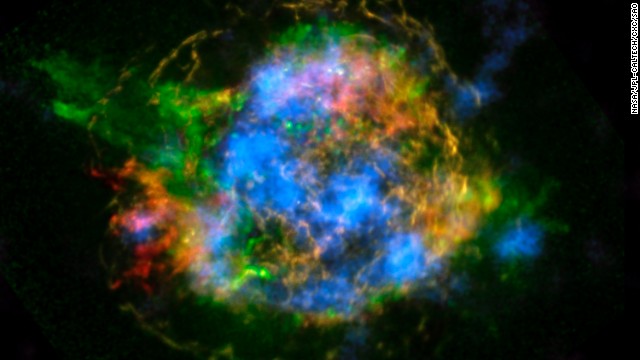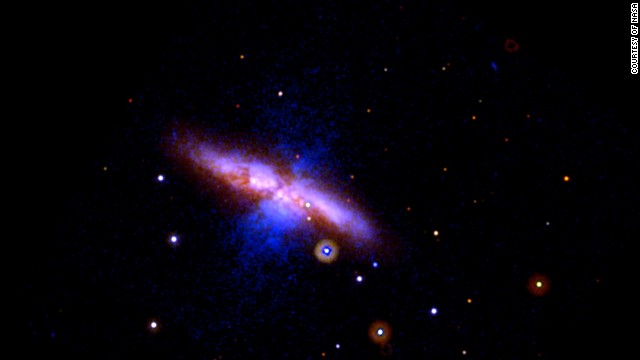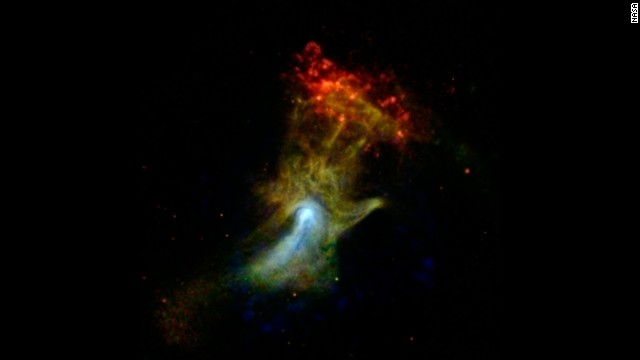It looks like you're using an Ad Blocker.
Please white-list or disable AboveTopSecret.com in your ad-blocking tool.
Thank you.
Some features of ATS will be disabled while you continue to use an ad-blocker.
5
share:
(CNN) -- Cassiopeia A was a star more than eight times the mass of our sun before it exploded in the cataclysmic, fiery death astronomers call a supernova.
And thanks to NASA space telescopes, scientists are learning more than ever about exactly how it happened.
The NuSTAR space telescope array is the first to map the radioactive material from a supernova explosion. The results were published Wednesday in the journal Nature.
"Until we had NuSTAR, we couldn't see down to the core of the explosion," Brian Grefenstette, lead author and research scientist at the California Institute of Technology, said at a news conference Wednesday.
NuSTAR's observations of Cassiopeia A showed scientists the location and distribution of radioactive titanium-44, an unstable isotope with a half-life of about 60 years. The supernova explosion's light arrived on Earth about 350 years ago, but even today there's still plenty of titanium-44 to be observed.
Each atom of titanium-44 decays to calcium, as well as two particles of light at particular frequencies that NuSTAR can detect. NuSTAR, which stands for Nuclear Spectroscopic Telescope Array, launched in June 2012 and consists of an instrument with two telescopes that focus high energy X-ray light.
* Source - www.cnn.com...
I find it fascinating that explosion happened about 350 years ago, there is still plenty of titanium-44 to be observed. One of reasons this is of high interest to us is that our own system is result of supernova explosion that happened about 5 billion years ago.

NASA's NuSTAR telescope array generated the first map of radioactivity in the remnants of an exploding star, or supernova. Blue in this image of Cassiopeia A represents radioactive material.

A supernova was spotted on January 21 in Messier 82, one of the nearest big galaxies. This wide view image was taken on January 22.

Is that a giant hand waving at us? Actually, it's what's left of a star that died and exploded a long time ago. Astronomers nicknamed it the "Hand of God." NASA's Nuclear Spectroscopic Telescope Array, or NuSTAR, took this image in high-energy X-rays, shown in blue. The image was combined with images from another space telescope, the Chandra X-ray Observatory.
ps. Just waiting for our creationist friends to use this image as clear evidence of creator's work...
edit on 20-2-2014 by SuperFrog
because: (no reason given)
reply to post by SuperFrog
That hand! how amazing
Still reading through the article, but blown away by the detailed imagery.
ty s&f
Ro
That hand! how amazing
Still reading through the article, but blown away by the detailed imagery.
ty s&f
Ro
new topics
-
FBI confirms new leads connected to DNA evidence and cellphone data in disturbing killings of elderl
Breaking Alternative News: 2 hours ago -
Moyes No Longer Blowing Bubbles
World Sports: 2 hours ago -
Breaking--Hamas Accepts New Cease Fire
Middle East Issues: 2 hours ago -
Soros, Rockefeller and Pritzker, according to a POLITICO analysis Back Palestinian protests
US Political Madness: 3 hours ago -
Tornado Obliterates Nebraska Building with Furious Anger
Fragile Earth: 3 hours ago -
They say justice is blind.
Religion, Faith, And Theology: 3 hours ago -
Liberal Democrats to Table a Motion of No Confidence in the government Tomorrow
Regional Politics: 5 hours ago -
Time Traveler Caught on Camera?
Paranormal Studies: 5 hours ago -
Trump legal cases are falling apart at break neck speeds
US Political Madness: 6 hours ago -
We are screwed
Global Meltdown: 6 hours ago
5
